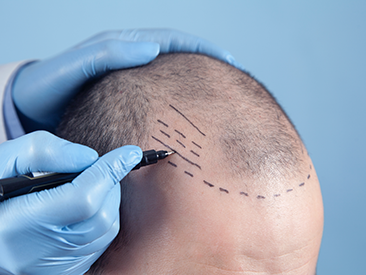
Sapphire FUE has become one of the most popular hair transplant methods in recent years. This article provides detailed info and explanations about the procedure.
Hair transplantation continually evolves with medical technologies and innovative methods in the field of aesthetic surgery. As a result of this evolution, the Sapphire FUE Hair Transplantation method addresses individuals seeking a solution to hair loss.
Advantages like harvesting more grafts, a more comfortable process, and making minor incisions make this hair transplant method favourable.
Sapphire FUE (Sapphire Follicular Unit Extraction) is a distinctive hair transplantation method that utilises a blade tipped with sapphire, a precious stone. Distinguished from the conventional FUE (Follicular Unit Extraction) technique, Sapphire FUE is notable for its precision in procedural steps and specialised application during the extraction and implantation of hair roots.
Each hair transplantation technique is unique, with its own advantages. The addition of a sapphire blade design to the popular FUE hair transplantation has brought significant benefits. Due to the natural durability and hardness of sapphire, it adds sharpness to the blades. The sapphire-tipped blade is finer, allowing for precise incisions. Extracting and transplanting hair follicles becomes easier. The advantage of making fine incisions is minimizing tissue damage, resulting in a lower risk of infection. Regardless of the method, successful hair transplantation depends on the expertise of the specialist to achieve the desired results.
Preferred as an aesthetic and effective option compared to traditional hair transplantation methods, Sapphire FUE consists of pre-procedure, during, and post-procedure processes. An evaluation stage precedes all these, covering the selection of a clinic, hospital, and doctor.
Consultation: The patient’s sculp and hairs is examined, expectations and concerns are listened to. The specialist examines the patient's hair structure, conducts a hair root examination, and assesses the level of hair loss in both the donor and target areas.
Procedure: The hair transplant specialist uses a sapphire-tipped micro tool to extract healthy hair follicles one by one from the donor area. It is crucial not to damage tissues and collected hair roots. Minor incisions are made on the skin surface using a sapphire blade during both graft collection and implantation. This ensures natural-looking aesthetic results. The collected hair grafts are placed one by one in the pre-prepared area. Selecting an experienced hair transplant specialist with an artistic perspective is crucial, as determining the hair's direction, density, and angle influences the final appearance.
Post-Procedure: The post-Sapphire FUE process is as important as the procedure itself. The patient must follow the specialist's instructions and recommendations. Postoperative hair transplant stages include avoiding damage to hair roots, caring for the transplantation area, and, if deemed necessary, receiving supportive treatments (such as mesotherapy and PRP).
Hair transplantation using the Sapphire FUE technique is periodically evaluated. The recovery process spans from the immediate post-procedure period to the first year. However, the return to daily life is not prolonged, and noticeable effects become apparent within a few months. Full recovery generally takes a year. After the operation, the patient may be kept in the clinic for a few hours. A sterile bandage may be applied to the hair transplantation area.
First Week: In the initial days, especially the first few days, the patient may feel discomfort and sensitivity. Swelling and redness are normal. Minor incisions in the donor and transplantation areas will scab over time. The first washing is done by the specialist in the clinic. The patient can handle subsequent washing and care periods; the specialist will provide detailed instructions on how to wash and dress the wounds.
During the initial week, individuals may experience pain, slight throbbing, and itching. Taking the recommended pain relievers is typically adequate to alleviate any discomfort.
First Month: Effects like redness and sensitivity may persist in the first month. During this period, the transplanted hair may shed. This stage, known as shock loss, is normal, and the hair will regrow in a few weeks, with no further shedding thereafter.
First 3 Months: Transplanted hair roots begin to grow, and this growth occurs gradually. Sparse hair appearance may be observed in the hair transplantation area, which is normal. The skin in the donor and transplantation areas heals, and redness decreases.
3 Months to 6 Months: Hair growth is more noticeable between 3 and 6 months, and hair is visible throughout the area. Hair density reaches a noticeable level, and redness diminishes to an inconspicuous level.
First Year: Recovery after hair transplantation is typically completed within a year. The shape, direction, and density of the hair are established. The marks left by Sapphire FUE hair transplantation become indistinct. The patient fully returns to daily life.
The specialist will thoroughly explain what the patient should and should not do after Sapphire FUE surgery. The recovery process is personal, but there are some general recommendations for all patients, with key points to consider:
The recovery process, like the operation, is personal, and recovery duration may vary for each patient. Choosing the right clinic and a skilled hair transplant specialist will impact the process and results. To experience Sapphire FUE hair transplantation with MedWide expertise, you can contact us.